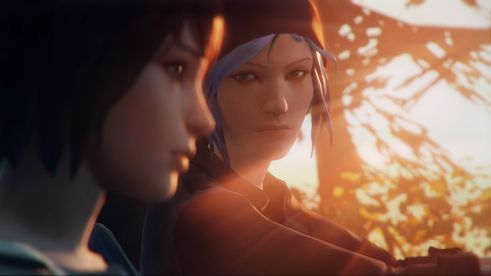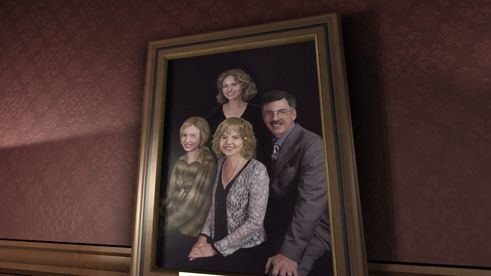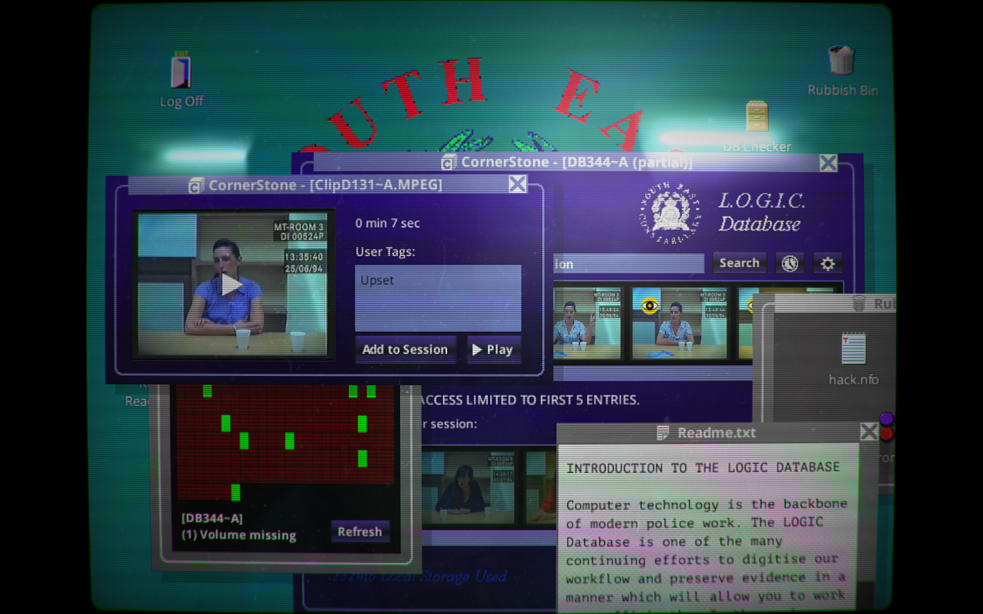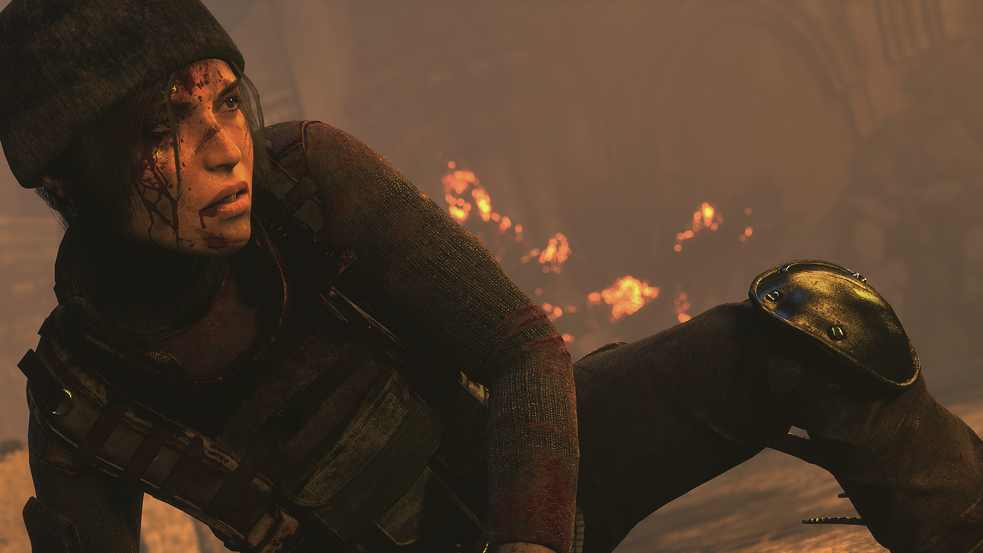Games and Gender
Thinkable Female Heroes

Are games still pure male domains? Free-lance gaming journalist and game developer Nina Kiel in her book „Gender in Games“ she has investigated gender-specific role models in contemporary titles. A conversation about gender and nerd culture.
Frau Kiel: Are games a reflection of society?
All media products are influenced by the society in which they are developed. Games are no exception.
Is there a specific sexism or gender problem in games?
Games are still in the beginning stages of a development towards greater content diversity. The medium’s origins are in computer science and the nerd culture linked with it. For this reason, rigid role models persisted in which men appeared as actors and women above all as victims or trophies. Only in recent years, with growing diversification, has a change become apparent as well.
 Computer game Life Is Strange
| © Dontnod Entertainment/ Square Enix
Computer game Life Is Strange
| © Dontnod Entertainment/ Square Enix
What does this change look like?
At least new perspectives are finding their way into the industry. People for the most part tell stories that originate in their personal experience, and therefore narratives about white men were being repeated until recently.
Are other games emerging now?
It’s at least no longer unthinkable for more female role models have important roles than male ones, and that they seem somewhat believable. For instance, Dontnod’s Life Is Strange has a primarily female cast. Mirror's Edge and its successor Mirror's Edge: Catalyst present an extremely athletic, Asian woman, and her body is contextualised as an instrument and not as erotic visual material. Gone Home even concentrates on a woman’s love life – to date a thematic focus like this has been rejected by many developers and distributors. They were afraid of scaring off the male target group.
 Computer game Gone Home
| © The Fullbright Company
And these games are successful?
Computer game Gone Home
| © The Fullbright Company
And these games are successful?
In terms of sales, only up to a point. Mirror's Edge suffered from underdeveloped Gameplay, Life Is Strange and Gone Home found a fan community, but remained niche titles.
People often assume a lack of interest in female protagonists when such games sell more poorly that expected. But for the most part these titles suffer from technical or narrative deficits. If a game with a male hero sells poorly, the reason is sought in inferior graphics, a boring narrative or badly thought-out game mechanics. In the case of women-centred titles, the woman is quickly zeroed in on as the decisive factor. And such games are on average given a significantly smaller marketing budget – because it’s assumed they’re going to flop in any case.
This is why indie games by small teams are all the more important. Because today cheap or free, user-friendly software is available for game development, more and more people, including those with less experience, are crowding into the medium. Games like Dys4ria, Papers Please, Talks With My Mom or Her Story clearly show just what potential is involved here. But as long as sexism is apart of society, it will necessarily be a part of games as well. We can only hope for more alternatives.
At the Gamescom I get the impression that it’s still mainly male teenagers who define the scene. Is this accurate?
In recent years, increasing numbers of women were to be seen at such industry events. But yes, the proportion of men is still significantly higher. Marketing plays a role in this context: for instance, one sees mainly male characters on game packaging, even if female figures play important parts.
 Computer game Her Story
| © Sam Barlow
This focus on the male gamer community is also plainly evident at events, above all through scantily-clad trade-fair hostesses who first draw attention to themselves and then to the respective product. That such advertising approaches are not aimed at women is obvious. And they potentially contribute to unpleasant misunderstandings as well. Female trade visitors are mistaken for hostesses and are photographed without their permission.
Computer game Her Story
| © Sam Barlow
This focus on the male gamer community is also plainly evident at events, above all through scantily-clad trade-fair hostesses who first draw attention to themselves and then to the respective product. That such advertising approaches are not aimed at women is obvious. And they potentially contribute to unpleasant misunderstandings as well. Female trade visitors are mistaken for hostesses and are photographed without their permission.
Others experience being taken in hand much more intensively and having the respective titles explained far more thoroughly than male consumers. I’ve experienced this too – and that as a gaming journalist.
It sounds as if there were a belief in the community as well that women in fact understand less about games.
Exactly, and the industry itself has contributed decisively to it. Especially in the 1980’s and 1990’s, game advertisements were common practice in which girls and women were presented as incompetent, abrasive, or as attractive visual objects. Video game marketing put its money on exclusion: the impaired egos of isolated and misunderstood nerds were burnished up. They were to feel competent, cool, and superior to others in masculine power fantasies – especially towards weak and technically incompetent women.
These advertising approaches led on the one hand to female gamers being perceived within the scene as in fact less competent, or even being discriminated against. And on the other hand, many girls and women turned their backs on this medium that so blatantly belittled them. The consequences are being felt to this day.
So in fact it’s mostly boys who are playing?
No, that has not been true for a long time now. In recent years the proportion of female players has almost continually risen. Women represent about 41% of the gaming community in the USA. And incidentally, “boys” is also inaccurate in another respect: the average player is 35 years old.
 Computer game | Rise of the Tomb Raider
| © Crystal Dynamics/ Square Enix
In your book, “Gender In Games,” you analyse role models, for example in Tomb Raider. Is Lara Croft now more of a strong female hero, or in the end just a pin-up?
Computer game | Rise of the Tomb Raider
| © Crystal Dynamics/ Square Enix
In your book, “Gender In Games,” you analyse role models, for example in Tomb Raider. Is Lara Croft now more of a strong female hero, or in the end just a pin-up?
Academics of all genders have been arguing over exactly this point for more than 20 years now. I also have no straightforward answer to this. Lara Croft is one of the first unreservedly competent, independent and tough women in video game history, and is thereby a figure that female players can identify with. On the other hand, especially in the series’ early titles, she represented an unattainable body ideal and was contextualised as a sex icon to stimulate sales. The ideal of femininity is familiar from films: although women are permitted to be outstanding, their excellence must also include their beauty. They are permitted to appear threatening, but must be aesthetically pleasing.
It’s not problematic for me if individual characters embody this schema, but that it is practically impossible for female figures to break out of it even to this day.
 Nina Kiel
| © Nina Kiel
Nina Kiel is a free-lance gaming journalist and game developer. She has been adressing the gender issue in games for years. Currently, among other things, she writes for Superlevel about sex and romance in games, and is working on the game Don‘t Make Love.
Nina Kiel
| © Nina Kiel
Nina Kiel is a free-lance gaming journalist and game developer. She has been adressing the gender issue in games for years. Currently, among other things, she writes for Superlevel about sex and romance in games, and is working on the game Don‘t Make Love.
Publication:
Nina Kiel, Gender in Games Hamburg (2014)